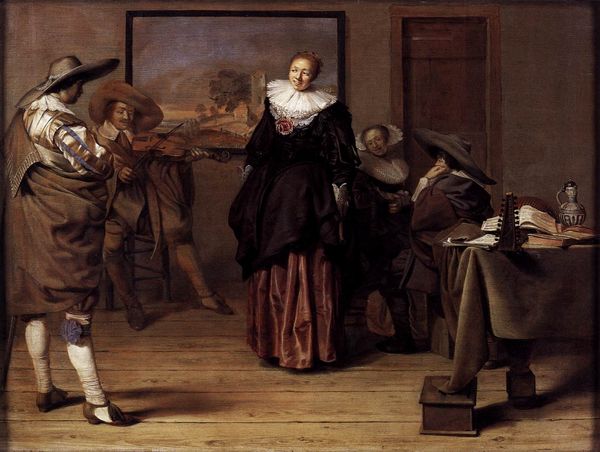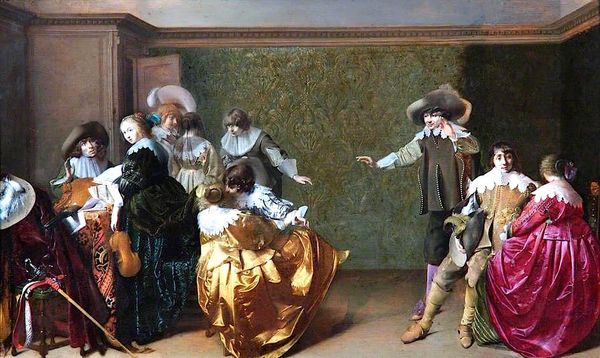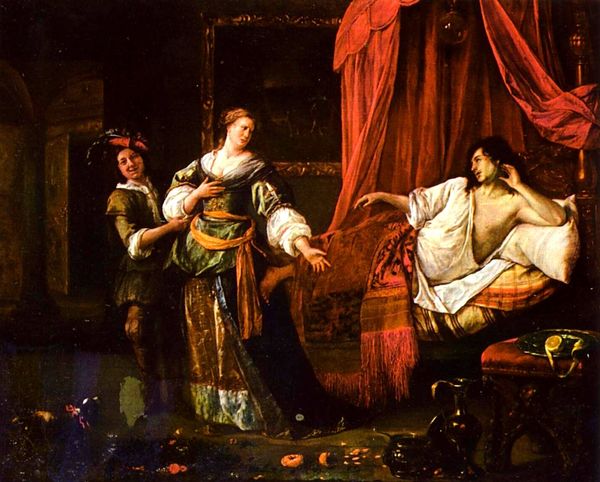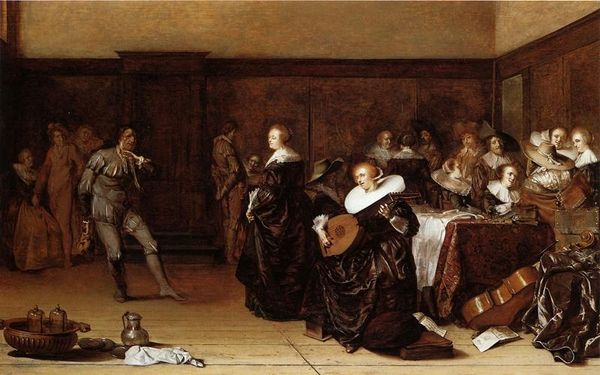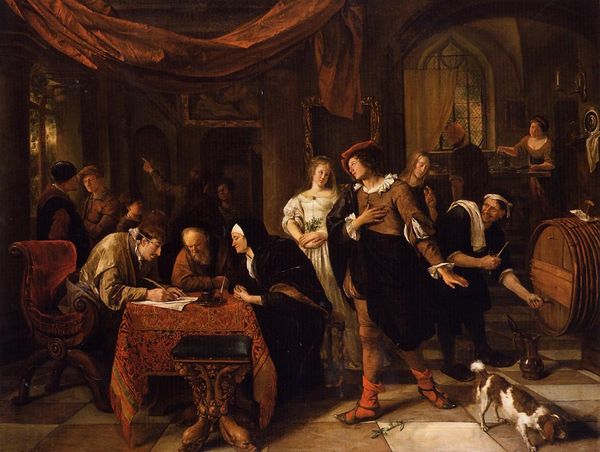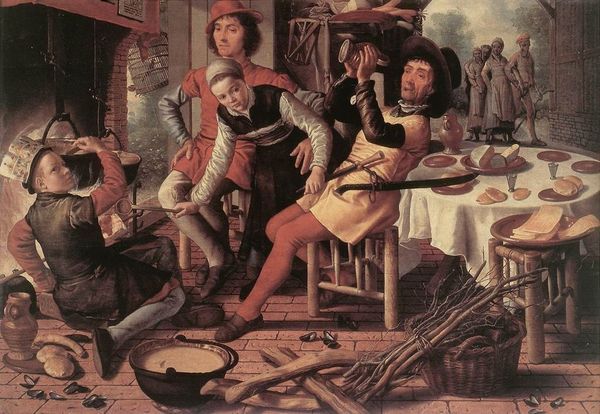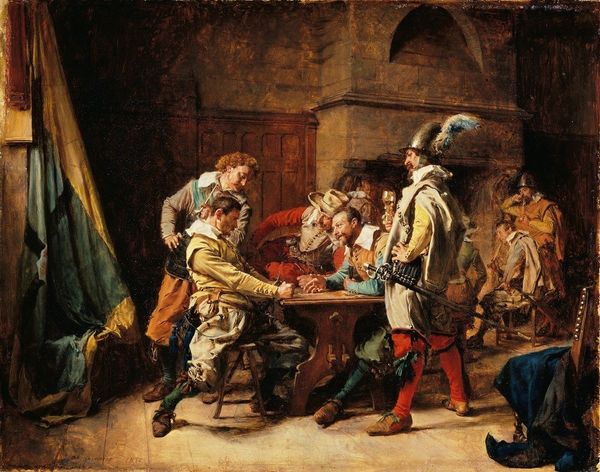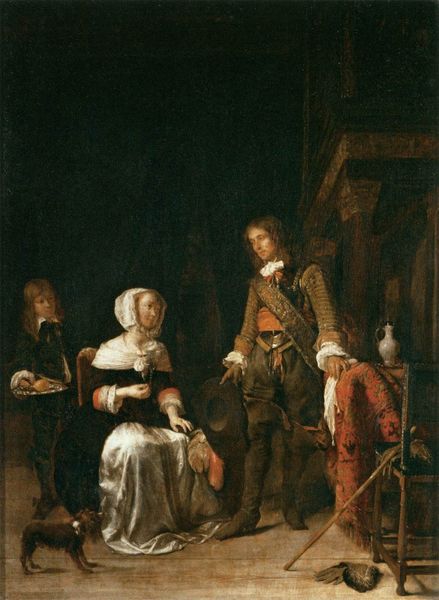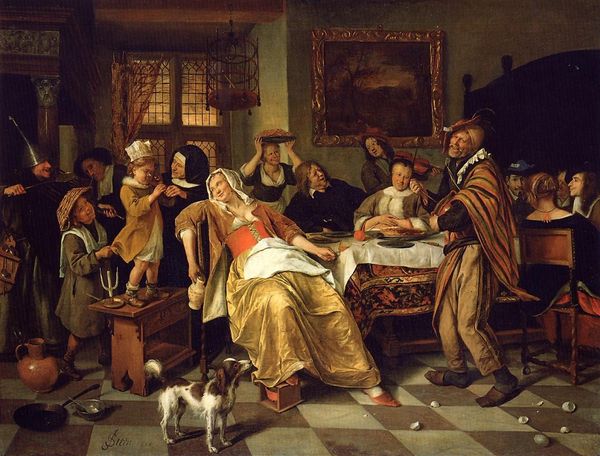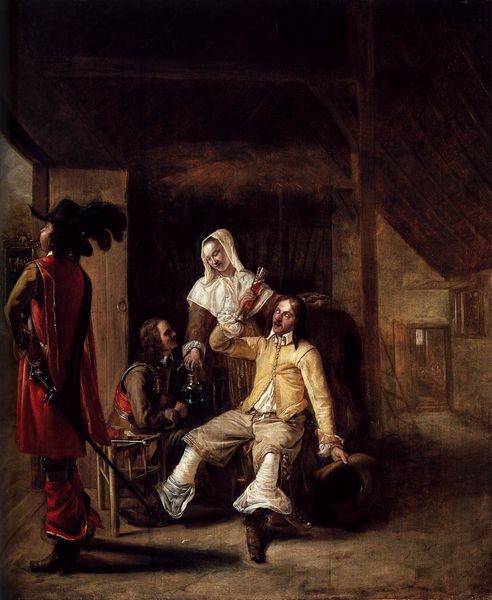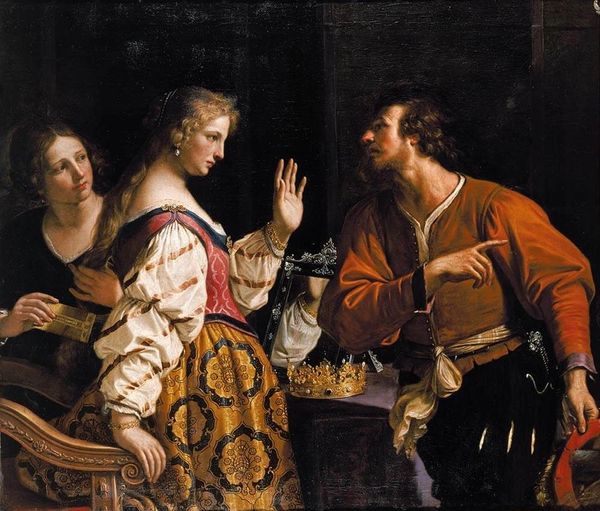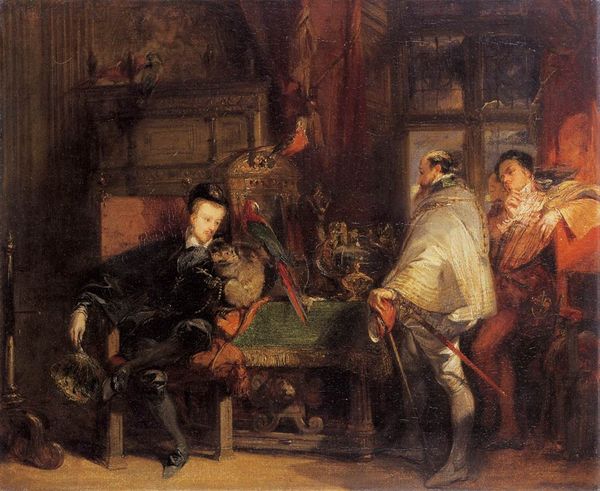
painting, oil-paint
#
baroque
#
dutch-golden-age
#
painting
#
oil-paint
#
figuration
#
oil painting
#
group-portraits
#
genre-painting
Copyright: Public domain
Curator: Welcome. We’re looking at Pieter Codde's "The Actors' Changing Room," an oil painting from 1635, offering a glimpse into a world rarely seen on canvas at the time. Editor: Oh, wow, my first thought is—total controlled chaos. Everyone's got this dramatic energy, but the scene feels intimate, almost secretive. It’s like a party before the party, or maybe the really fun part of the play happened backstage. Curator: Exactly! Codde captures a specific moment in the social fabric. Theater wasn't just entertainment; it was deeply intertwined with cultural identity and, for some, social mobility. Analyzing the work, the very concept of 'performance' extends beyond the stage, questioning performed identities, perhaps...even sexual freedoms and boundaries. Editor: I love that. It’s like a Rembrandt got tipsy and decided to paint a Renaissance reality show. I can almost smell the musty costumes and hear the bawdy jokes. It's more real than the stuff happening "on stage." You can feel the performativity crumbling. And who's the figure stage left—they are masked, after all—maybe not an actor? Maybe more likely, given our times, a stage-door Johnny? Curator: An intriguing point. Note also how Codde uses lighting. The dim interior, punctuated by shafts of illumination, could be a deliberate decision to cast shadows on these activities. While Dutch Golden Age paintings often focused on moral themes, this painting, due to it's setting, feels decidedly different—perhaps pushing against conservative expectations. These spaces of 'performance' often reveal truths hidden elsewhere. Editor: That's so spot on! Light becomes a kind of accomplice here. It picks out the sly grin on the guitar player’s face, the ruffled finery of their costumes. I mean, the lighting tells a story that isn't said! This little world comes into being just behind the velvet curtain, but it feels so raw and real in its artifice. Curator: Agreed. There are such rich details inviting exploration. Understanding 'backstage' spaces – both literal and metaphorical – can illuminate the societal power structures and performances occurring elsewhere in 17th-century life. Editor: Right? This is like accidentally stumbling into the best after-party of the 1600s. I can’t help thinking—what secrets are those walls keeping? Curator: Indeed. This genre scene offers glimpses into the fluidity of identity during Codde’s time and perhaps... into the parts that remain so similar to our own. Editor: Seriously, a backstage pass into the 17th-century? I'm sold.
Comments
No comments
Be the first to comment and join the conversation on the ultimate creative platform.
